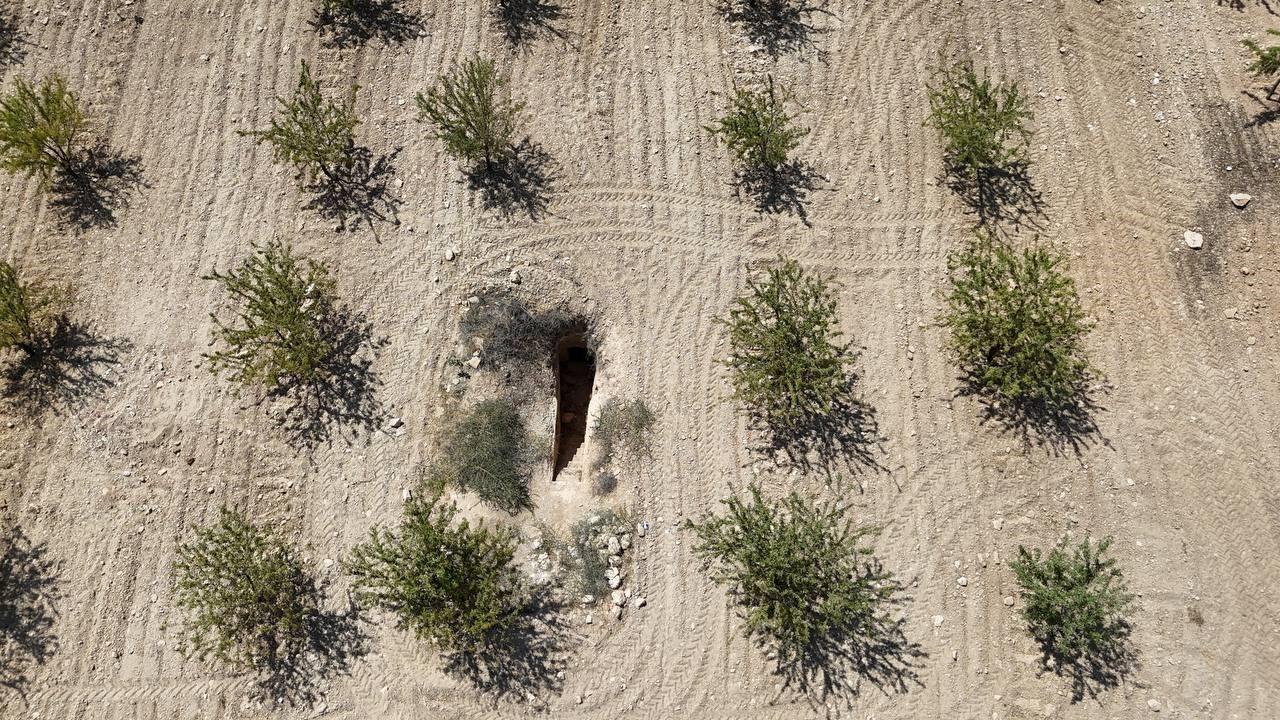
Recent investigations in the Suruç district of the southern province of Şanlıurfa have revealed that a rock formation in a pistachio field, thought for years by locals to be a simple cave, is an ancient rock-cut tomb dating back thousands of years.
The Şanlıurfa governor’s office has since moved to protect the historic site located in Köseveli village, approximately 1 kilometer west of the village center.
The tomb was previously thought by residents to be a man-made cave used as an animal shelter or storage. Former village headman Mehmet Kaya explained that knowledge of the site only emerged five to 10 years ago, with locals initially unaware of its historical significance.
“We thought it was a cave, but now it’s known as a rock tomb, similar to ones said to exist in Egypt,” he said.
Şanlıurfa Governor Hasan Şıldak announced via social media that the tomb has been documented as part of the city’s cultural inventory. He described the tomb’s structure as a single-chambered, east-west oriented dromos with three niches on each side.
The entrance, facing west, features a cross motif beside its doorway. Inside, symmetrical vaulted sections house multiple recessed burial niches, some with rounded arches, while inscriptions adorn the vaulted areas above.